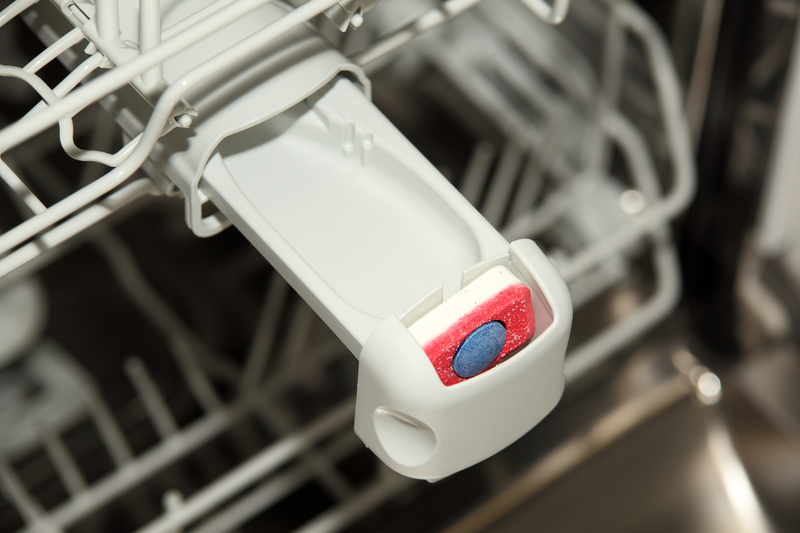Air Quality: A Pillar of Health and Efficiency in Homes and Offices
Posted on 30/05/2025
Air Quality: A Pillar of Health and Efficiency in Homes and Offices
The concept of air quality has transitioned from being a mere environmental metric to a cornerstone of public health and productivity. Whether we realize it or not, the air we breathe within our homes and offices plays a pivotal role in our daily wellbeing, cognitive function, and even our long-term health. This comprehensive article delves into the multifaceted impacts of indoor air quality, explores common pollutants, outlines measures for improvement, and addresses why both homeowners and businesses should prioritize clean air.
Why Is Indoor Air Quality So Important?
Clean air is fundamental for life, yet modern civilization has often overlooked indoor air quality (IAQ) in favor of outdoor pollution challenges. With the average person spending approximately 90% of their time indoors--at home, in offices, or in other enclosed environments--understanding and optimizing the quality of indoor air has never been more vital.
- Health Impacts: Poor IAQ has been directly linked to respiratory diseases, allergies, asthma, and even neurological effects.
- Workplace Efficiency: Several studies show a correlation between better air quality and enhanced cognitive function, energy levels, and productivity.
- Economic Costs: Healthcare expenses, sick leaves, and decreased efficiency due to subpar air can be substantial, both at household and organizational levels.
Major Pollutants Affecting Indoor Air Quality
**Understanding what contributes to poor air quality is the first step in combatting its effects. Some of the major indoor air pollutants include:**
- Volatile Organic Compounds (VOCs): Commonly emanate from paints, varnishes, cleaning products, and even office equipment.
- Particulate Matter (PM2.5 and PM10): Tiny airborne particles originating from dust, combustion, and outdoor air pollution.
- Carbon Dioxide (CO2): Builds up in poorly ventilated spaces when exhaled by occupants, affecting cognition and comfort.
- Mold and Biological Agents: Humid environments foster the growth of bacteria, mold, and dust mites.
- Radon Gas: Naturally occurring radioactive gas that can seep into buildings and is a leading cause of lung cancer among non-smokers.
- Chemical Contaminants: Includes substances like formaldehyde and benzene, often present in office furniture, flooring, and construction materials.

The Direct Connection Between Air Quality and Health
The impact of air quality on human health is well-documented. From minor irritations to severe chronic illnesses, effects can manifest in various forms:
- Short-Term Consequences: Eye, nose, and throat irritation, headaches, dizziness, and fatigue.
- Long-Term Diseases: Chronic respiratory illnesses, cardiovascular problems, certain cancers, and reduced immune function.
- Sensitive Populations: Children, elderly, and those with pre-existing health conditions are especially vulnerable to poor air.
Air Quality's Role in Mental Health and Performance
Recent research highlights the connection between high-quality indoor air and improved cognitive outcomes. Elevated levels of carbon dioxide or volatile compounds can impair decision-making, increase fatigue, and reduce overall office efficiency.
- Better Focus: Adequate ventilation and pollutant reduction result in greater concentration and memory retention.
- Lower Absenteeism: Fewer illnesses result in fewer sick days.
- Mood Enhancement: Cleaner air correlates with more positive moods and lower stress levels, vital for productive work and comfortable living.
Understanding Air Quality in Residential Settings
Main Contributors to Poor Home Air Quality
- Tobacco Smoke: Remains one of the most dangerous and persistent indoor pollutants.
- Household Cleaning Products: Many contain VOCs and toxic chemicals that linger long after use.
- Cooking Emissions: Stove burners, especially gas, can release pollutants if not properly ventilated.
- Building Materials: Formaldehyde and other chemicals off-gassing from modern materials and furniture.
- Poor Ventilation: Traps pollutants indoors, exacerbating their concentration.
Understanding these sources is the first step for homeowners to improve their air quality and, by extension, their health.
Tips for Improving Home Air Quality
- Ventilation: Ensure regular airing of spaces, use exhaust fans in kitchens and bathrooms.
- Reduce Chemical Use: Opt for natural cleaning solutions and low-emission household products.
- Humidity Control: Use dehumidifiers or air conditioners to maintain optimal humidity (30%-50%) and prevent mold growth.
- Regular Maintenance: Clean HVAC filters, air ducts, and carpets frequently.
- Use of Indoor Plants: Certain plants can help filter toxins, though their effect is often limited in scope.
- Radon Testing: Periodically test for radon, particularly in basements and first floors.
Air Quality in Offices: Why It Matters for Business
Office air quality is directly tied to employee satisfaction, health, and productivity. Inadequately ventilated office spaces can lead to "Sick Building Syndrome" (SBS), manifesting as unexplained symptoms among staff that dissipate once they leave the building.
Top Challenges in Office Air Management
- Poor HVAC Maintenance: Clogged filters and ducts can re-circulate dust and microbes.
- Open-Plan Layouts: Facilitate rapid contaminant spread, especially airborne viruses.
- High Occupant Density: More people means higher CO2 and increased pollutant buildup.
- Printer and Copier Emissions: Release ozone and VOCs into the environment.
Actions to Enhance Workplace Air Quality
- Routine System Checks: Regularly inspect and maintain ventilation and filtration systems.
- CO2 Monitoring: Install CO2 sensors to adjust air exchange rates on demand.
- Air Purifiers: Deploy units with HEPA and activated carbon filters in areas with limited ventilation.
- Low-Emission Office Supplies: Use furniture and materials certified for low chemical emissions.
- Encourage Green Practices: Allow staff to report air issues and participate in environmental initiatives.
- Workspace Design: Optimize layouts for airflow and access to natural light, which also supports wellbeing.
Smart Technology and Air Quality Monitoring
The digital age introduces smart solutions for continuously monitoring and managing air quality in both homes and offices. Advanced sensors can detect a range of pollutants, and integrated control systems can automatically adjust ventilation, temperature, and filtration.
Key Features of Modern Air Quality Devices
- Real-Time Data: Instantly view pollutant levels via smartphone apps.
- Alerts & Automations: Set up notifications or automatic purifier operation when certain thresholds are exceeded.
- Integration: Compatible with smart home or building management systems for seamless air control.
Benefits of Air Quality Monitoring
- Proactive Health Protection: Prompt action at early signs of hazardous air levels.
- Energy Optimization: Efficient ventilation when necessary, reducing unnecessary energy usage.
- Empowered Occupants: Greater awareness and ability to respond to changes in the environment.
Regulations and Standards for Air Quality
Government agencies and health organizations worldwide outline air quality standards to protect public health. In many regions, regulations such as those from the EPA (Environmental Protection Agency) or WHO (World Health Organization) set maximum limits for certain indoor pollutants.
- ASHRAE Standards: The American Society of Heating, Refrigerating and Air-Conditioning Engineers issues comprehensive guidelines on acceptable indoor air quality.
- ISO Certifications: International Organization for Standardization publishes standards for maintaining healthy air in business and public environments.
Complying with these standards not only reduces legal risk but also showcases a commitment to health and well-being.

Future of Indoor Air Quality: Trends and Innovations
- Biophilic Design: New construction and renovations increasingly integrate natural materials and ventilation for better air and wellness.
- AI-Driven Air Management: Artificial intelligence optimizes building environments in real time, adapting to occupancy and pollutant data.
- Personal Purification: Wearable air monitors and portable purifiers are emerging for ultra-personalized health.
The Growing Role of Air Quality as a Core Health Priority
As awareness of environmental hazards grows, air quality is positioned as a fundamental determinant of lifestyle and work success. Companies and families alike are realizing the transformative benefits of clean air--from lowering disease transmission to engaging talent and sustaining wellness.
Conclusion: Making Air Quality a Top Priority in Every Space
Air quality is much more than an invisible metric; it is a critical pillar underpinning health, comfort, and efficiency in both homes and offices. Investing in better air quality pays dividends in physical health, mental clarity, workplace performance, and even financial savings. By understanding pollutants, adopting technological innovations, and adhering to best practices, every space can become a safe haven where clean air supports human flourishing.
Prioritize air quality--your lungs, mind, and productivity will thank you.




